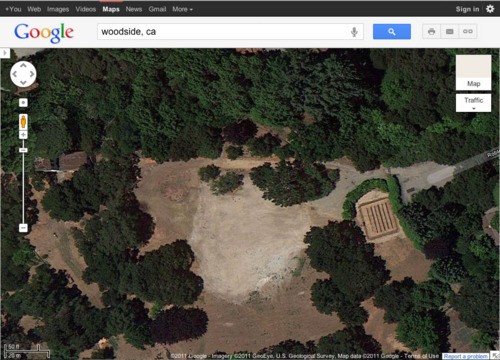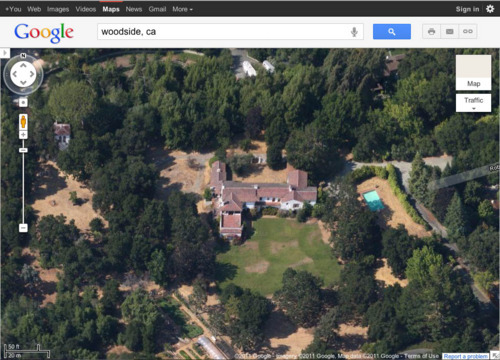Because Google Maps (like other mapping services) utilizes imaging data from multiple sources gathered at different points in time, the same geographic spot can sometimes look very different as you move between zoom levels and views.
Weather and seasons can change unexpectedly. Cars can disappear without a trace. Things that were are suddenly no more. It is, quite simply, a time machine.
Recently I ran across an example of this effect that is particularly interesting, and bittersweet.
For many years Steve Jobs lived in an old Woodside mansion known as the Jackling House. Built 85 years ago in the Spanish Colonial Revival style, many considered it historic. And yet Steve purportedly hated it. He wanted to tear it down and replace it with a more modest, modern home. For years he battled preservationists, and then in February of this year he finally won the fight and demolished the house.
In searching Google Maps for the house’s location I discovered something unexpected: it’s still there. Kind of. See for yourself. Here’s a screenshot of the map, since at some point soon the imagery will be updated:

There the house stands, dilapidated yet still proud. But turn off the 45° imagery mode, and the house is instantly replaced with an image of the current reality: a barren field.

Steve had the right to do what he did, and I’m sure he had his reasons. But I’m still saddened by the Jackling House’s destruction. It was, to my eye, unique and beautiful.
Now all we have of it is this digital afterlife, an echo of something great. Pondering the sad symbolism here is an exercise I leave to the reader.